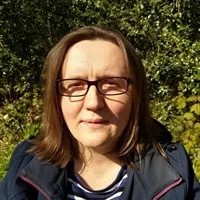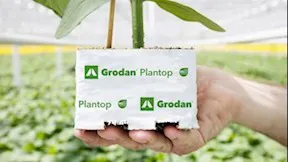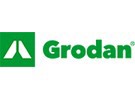“We hope you consume the knowledge from this seminar, but also consume the stroopwafels (Dutch cookies) we sent you!” That is how the moderator started Grodan’s propagation seminar, last Wednesday. In this webinar, Marta Streminska with Wageningen University & Research discussed the microbiology of soilless cultivation and Thomas Douma, an international consultant with Grodan, talked about the water capacity of the new NG2.0 technology of the blocks, slabs and plugs. There was also a video from Roelands Plant, which will be explored in a later article.
Microbiology
In soilless culture, there’s pros and cons compared to in-soil cultivation. One of the pros is that soilless substrates can be used everywhere, as you can control pretty much everything from water to climate. And a big plus is that you can give your plants a start without harmful pathogens. Some cons of soilless substrates are a limited microbial buffer and they are very sensitive to microbes being introduced via the water.
At the start, rockwool is sterile.  But with plants, water and everything coming in, it will not stay sterile for long. But, as Marta explained, biodiversity around the plants is very important. You do want microbes to enter your growing area, just not the pathogens. In soil, there’s the highest amount of bacteria, so the highest biodiversity as well. That is very difficult to replicate in a soilless culture, but: “Even if you don’t see them, the bacteria and microbes are still there.”
But with plants, water and everything coming in, it will not stay sterile for long. But, as Marta explained, biodiversity around the plants is very important. You do want microbes to enter your growing area, just not the pathogens. In soil, there’s the highest amount of bacteria, so the highest biodiversity as well. That is very difficult to replicate in a soilless culture, but: “Even if you don’t see them, the bacteria and microbes are still there.”
Plant development has three important outside factors that affect it: the Good, the Bad and the Ugly. The Good are the plant growth promoting bacteria and fungi, degrading organic matter, helping with nutrient availability and the production of auxins, and they increase the tolerance to abiotic stress like salinity or drought. The Bad are plant pathogens. Think Pythium, fusarium, root rots. Some can even move through water and quickly infect the whole growing area. To prevent this from happening, in soilless culture it’s important to start with disease free starting material, implement good hygiene, disinfect the feedwater, and manage the overall resistance of plants. The Ugly are human pathogens, it’s important that the fresh produce is not a carrier for human diseases.
Propagating optimally
The last speaker of the seminar was  Thomas Douma, international crop consultant with Grodan. He discussed the importance of optimal propagation processes. He started off with some background about the technology in substrates. In 2004, the Delta technology was introduced. Then in 2007, they got the NG technology, which provided a more uniform distribution, even though not optimal. In 2016, the NG2.0 was put into use, it's now called Plantop.
Thomas Douma, international crop consultant with Grodan. He discussed the importance of optimal propagation processes. He started off with some background about the technology in substrates. In 2004, the Delta technology was introduced. Then in 2007, they got the NG technology, which provided a more uniform distribution, even though not optimal. In 2016, the NG2.0 was put into use, it's now called Plantop.
The NG2.0 technology is used in the whole product range, from plugs to blocks to slabs. “This is a good combination for the production cycle.” Some key advantages are the distribution of water content and EC in the top layer of the substrate, which gives more root development at the top, so more use of the whole volume of the substrate.
in the whole product range, from plugs to blocks to slabs. “This is a good combination for the production cycle.” Some key advantages are the distribution of water content and EC in the top layer of the substrate, which gives more root development at the top, so more use of the whole volume of the substrate.
For a propagator, the steerability of the substrate is important, so that was a key point in developing this technology. “A good begin is half of the work already done, is how a Dutch saying goes, pointing out the advantage of a good start. The initial saturation is key, make sure that the block weighs enough and took up enough water,” stresses Thomas.
For more information: Grodan
Grodan
www.grodan.com
